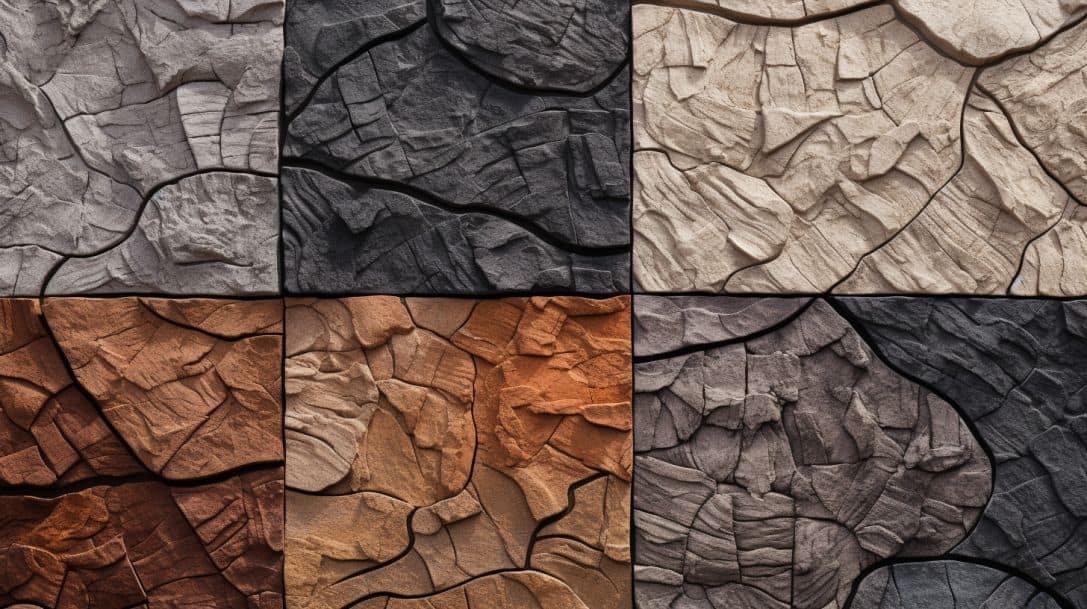Exploring the Next Generation of EIFS through Technological Advancements and Connectivity

Exterior Insulation and Finish Systems (EIFS) have revolutionized the way we design and construct building facades. EIFS provides a continuous layer of insulation on the exterior walls of a building, covered by an acrylic-based finish. This allows for improved thermal performance, weather resistance, and design flexibility compared to traditional wall cladding systems.
As EIFS continues to advance, integrating smart materials and Internet of Things (IoT) technologies will lead to even greater capabilities. EIFS of the future will be highly intelligent, adapting in real-time to optimize energy efficiency, safety, and comfort.
Introduction to EIFS and Smart Materials
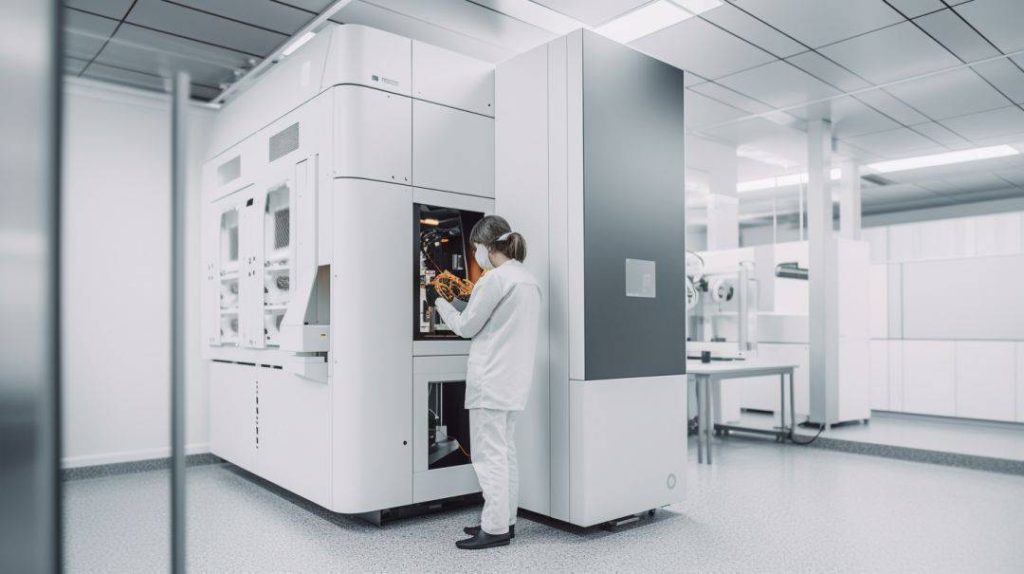
EIFS was first developed in post-war Germany to rebuild quickly and economically. Use spread across Europe and to North America by the 1970s. Early EIFS consisted of adhesive, insulation board, reinforcing mesh, basecoat, and finish coat.
While the fundamentals remain the same, modern EIFS offer dramatic improvements. Advanced acrylic finishes providing greater fade resistance, breathability, and aesthetic options. The variety of insulation materials has expanded. Reinforcing meshes and basecoats have become stronger and more durable.
Integrating smart materials and IoT will be the next evolution for EIFS. Smart materials are substances engineered to have special properties that adapt to changes in their environment. For example, smart glass can switch between transparent and opaque. Using smart materials in EIFS will enable the systems to dynamically respond to weather, occupancy, energy demands, and more.
Definition and Examples of Smart Materials
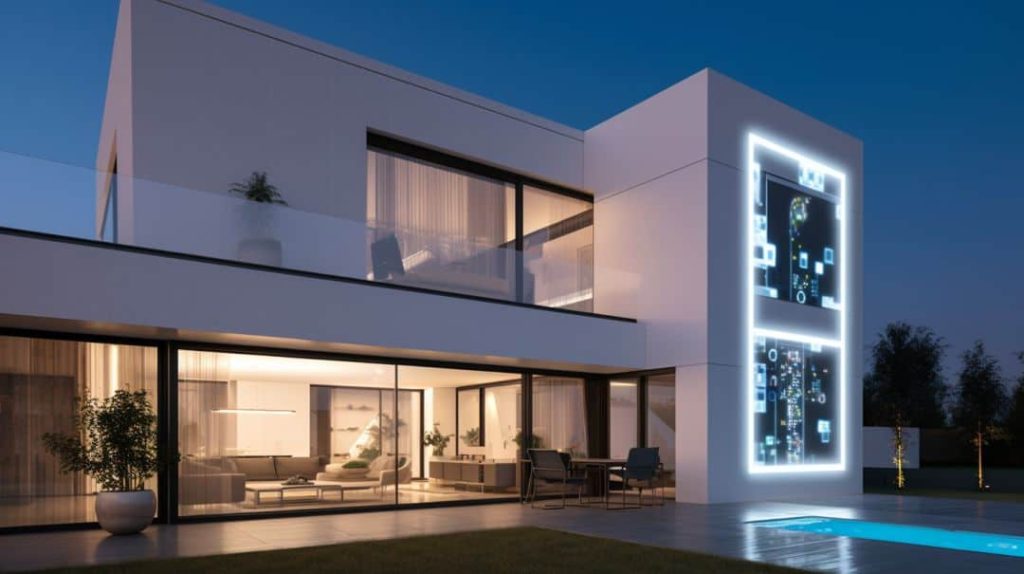
Also known as adaptive or responsive materials, smart materials change their properties based on external inputs from the environment, such as stress, temperature, moisture, pH, and electric or magnetic fields. These materials are designed with special internal structures that cause them to react in specific ways.
Here are some common types of smart materials and how they work:
- Shape memory alloys: Change the shape and return to their original form when heated or cooled past a certain temperature threshold. Often made from nickel-titanium (nitinol).
- Piezoelectrics: Generate an electrical charge under mechanical stress. Used in sensors and actuators. Examples are certain ceramics and crystals like quartz.
- Chromogenic materials: Change color, transparency or other optical characteristics in response to electrical, optical or thermal signals. Includes electrochromic, photochromic and thermochromic materials.
- Rheological fluids: Dramatically change viscosity and ability to flow based on applied forces or magnetic fields. Examples are magnetorheological and electrorheological fluids.
- Self-healing materials: Have internal mechanisms to automatically repair damage such as cracks and ruptures. Bio-concrete with built-in bacteria is an example.
These remarkable materials open up new possibilities for smarter, more dynamic and responsive design in fields like electronics, robotics, aerospace, medicine, architecture and more.
Impact of Smart Materials on Efficiency and Design
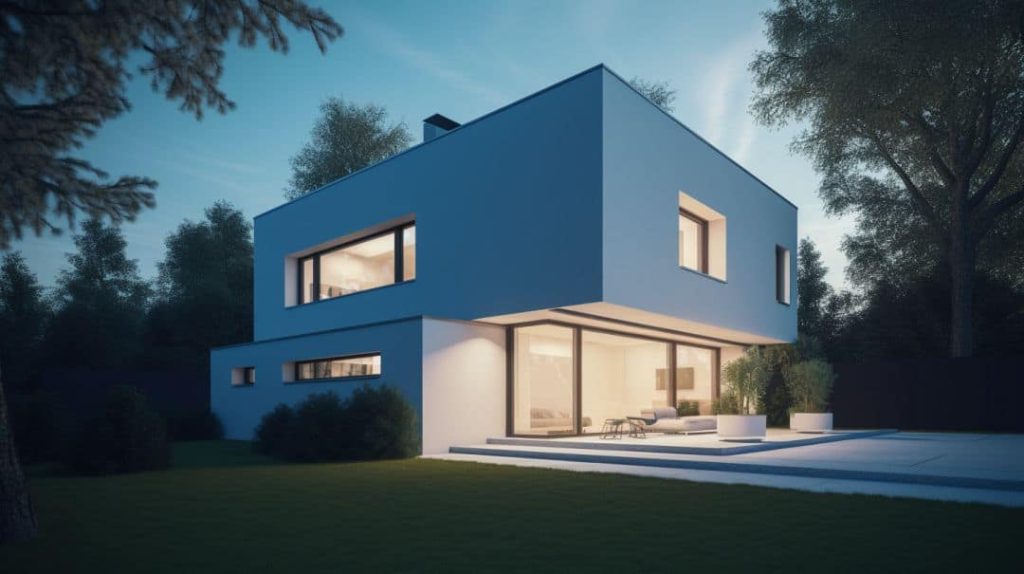
Integrating smart materials into EIFS stands to provide broad benefits for efficiency, capabilities, and aesthetics. As the external barrier for a building, EIFS impacts energy use for heating and cooling, weather resistance, noise control, and the overall look and feel.
Some key impacts of utilizing smart materials in EIFS include:
- Improved insulation performance: EIFS with smart materials like phase change materials or vacuum-insulated panels can dynamically adjust insulation levels based on outdoor temperatures or heating/cooling demands. This maximizes efficiency.
- Enhanced moisture control: Smart materials like moisture-activated polymers can open or close pores in the EIFS finish based on humidity. This allows the walls to “breathe” and prevents moisture buildup.
- Better daylighting: Electrochromic coatings on EIFS can tint dynamically to control glare and heat gain, reducing the need for curtains or blinds near windows.
- Increased durability: Self-healing concrete finishes mend their own cracks autonomously, improving weatherproofing and longevity.
- Customizable aesthetics: EIFS with color-changing or light-emitting materials can create dynamic facades that shift colors, patterns and lighting effects.
- Optimized for occupant comfort: Smart glass integrated into EIFS modulates indoor light levels, while phase change materials absorb excess heat and release it later as needed.
The adaptivity of smart materials provides breakthrough potential for both performance and design freedom. EIFS are transformed from static insulation into intelligent, highly responsive building skins.
Popular Courses and Applications of Smart Materials
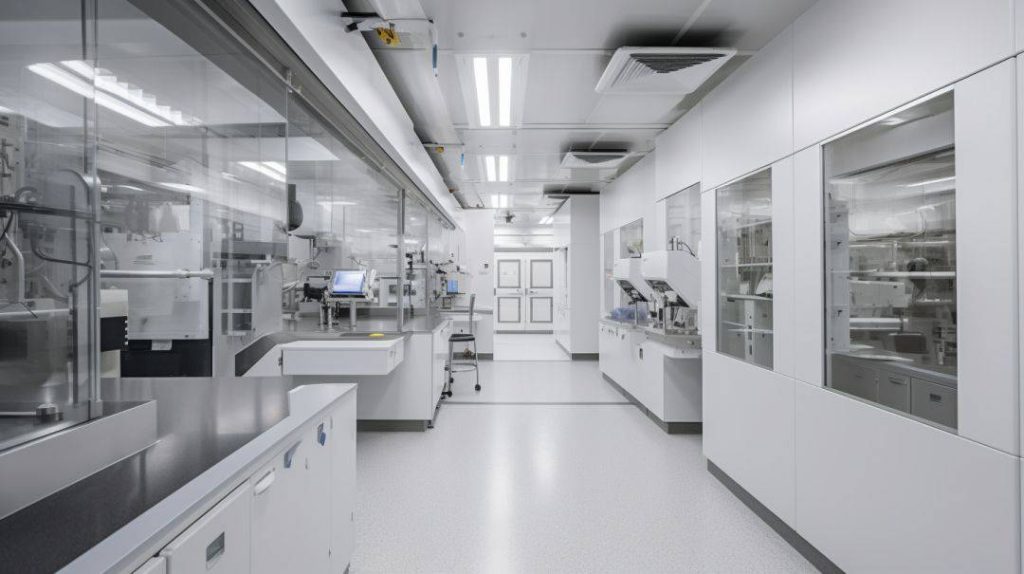
Several specific types of smart materials have compelling use cases for integration with EIFS:
Thermochromic Materials
- Use: Automatically adjust solar heat gain and glare protection as outdoor conditions change.
- How it works: Thermochromic materials shift visual properties in response to temperature changes. They can modulate transparency, color, reflectivity and more.
- Benefit: Reduce heat gain in summer and maximize solar warmth in winter. Limit glare and need for blinds/curtains.
Phase Change Materials
- Use: Store and release heat as needed to maintain indoor comfort and temperature stability.
- How it works: Phase change materials (PCMs) absorb and release significant thermal energy during phase transitions between solid and liquid state.
- Benefit: Increase insulation capability and energy efficiency of EIFS. Stabilize indoor temperatures.
Self-Healing Concretes
- Use: Autonomously seal cracks and repair deterioration to prevent water intrusion and structural issues.
- How it works: Microcapsules or bacteria in concrete trigger a chemical reaction that fills cracks when they form.
- Benefit: Extend EIFS lifespan by mitigating freeze/thaw damage, corrosion, leaks and repairs.
Hydrogels
- Use: Absorb or release moisture to maintain optimal humidity and drying potential within the wall assembly.
- How it works: Hydrogels are cross-linked polymers that can absorb over 500x their dry weight in water. Their swelling is reversible.
- Benefit: Control moisture and condensation risks. Allow EIFS to “breathe” naturally and prevent mold or rot.
Aerogels
- Use: Provide a super-insulating layer to boost thermal resistance dramatically and save energy.
- How it works: Aerogels are extremely porous materials derived from gels where the liquid is replaced with gas. This creates an exceptional insulator.
- Benefit: Significantly improve insulation value for EIFS walls, especially helpful for retrofits. Save on heating and cooling costs.
These are just a few examples of smart materials that are poised to transform EIFS capabilities for insulation, durability, breathability, occupant comfort and aesthetics.
Integration of IoT in EIFS and Its Benefits
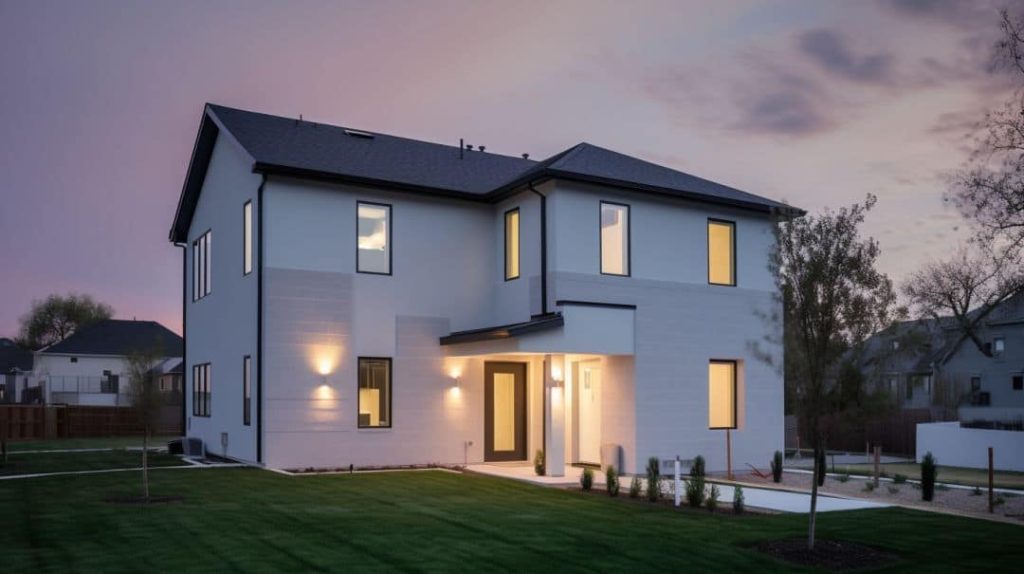
The Internet of Things (IoT) involves adding network connectivity and embedded sensors to physical objects. This allows them to collect and exchange data, automate functions, and integrate into broader digital systems.
Integrating IoT technology into EIFS opens up new ways to monitor conditions and enable smart functionality:
- Embedded sensors can track temperature, humidity, occupancy, light levels, noise, wall motion, structural stresses, and more.
- Wireless connectivity and networks allow EIFS components to communicate in real time and respond intelligently to data inputs.
- Automation and digital integration enable EIFS to react automatically based on sensor data to control insulation, air tightness, lighting, heating, and other systems.
- Remote monitoring and control allow building owners and facility managers to view EIFS performance metrics and configure settings remotely.
- Predictive analytics powered by machine learning can detect inefficiencies or issues and recommend solutions to optimize EIFS performance.
Benefits of integrating IoT into EIFS include:
- Increased energy efficiency and weatherization
- Enhanced occupant comfort and productivity
- Reduced operations and maintenance costs
- Improved moisture control and condensation prevention
- Early warning of potential failures or necessary repairs
- More holistic integration with overall building systems
By merging construction materials science and digital technology, IoT-enabled smart EIFS can actively maintain ideal conditions according to real-time needs.
Examples of Smart Materials used in EIFS
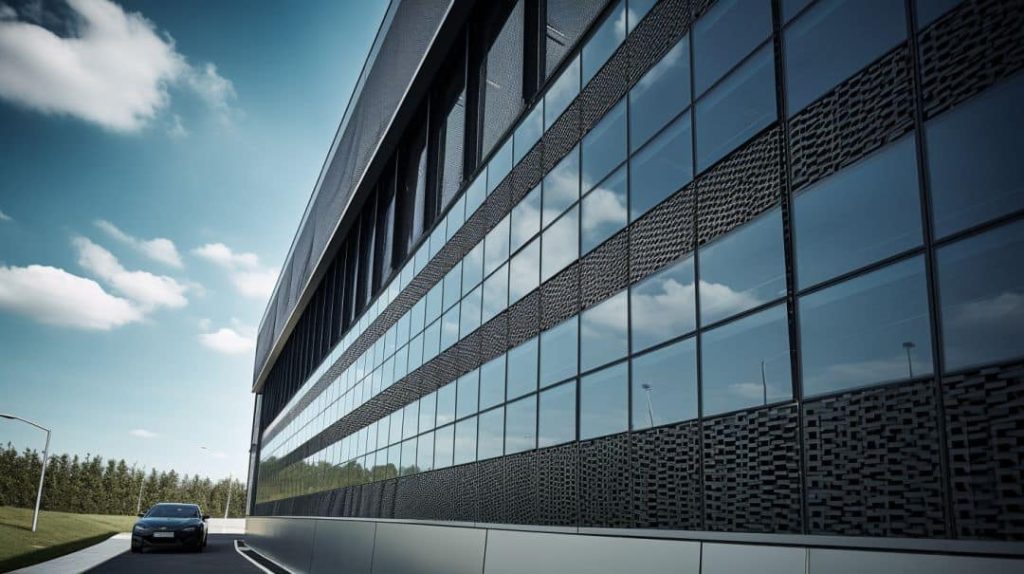
Here we’ll examine some specific smart materials that show promise for integration into EIFS assemblies and components:
Thermobiometal (Metal that Breathes)

- Use: Automatically expand or contract to seal gaps and prevent air infiltration based on temperature changes.
- How it works: The layered molecular structure causes the metal to expand and contract at different rates per degree of temperature change. This seals or exposes gaps.
- Benefit: Improve insulation, reduce drafts, and stabilize indoor temperatures.
Hydroceramic
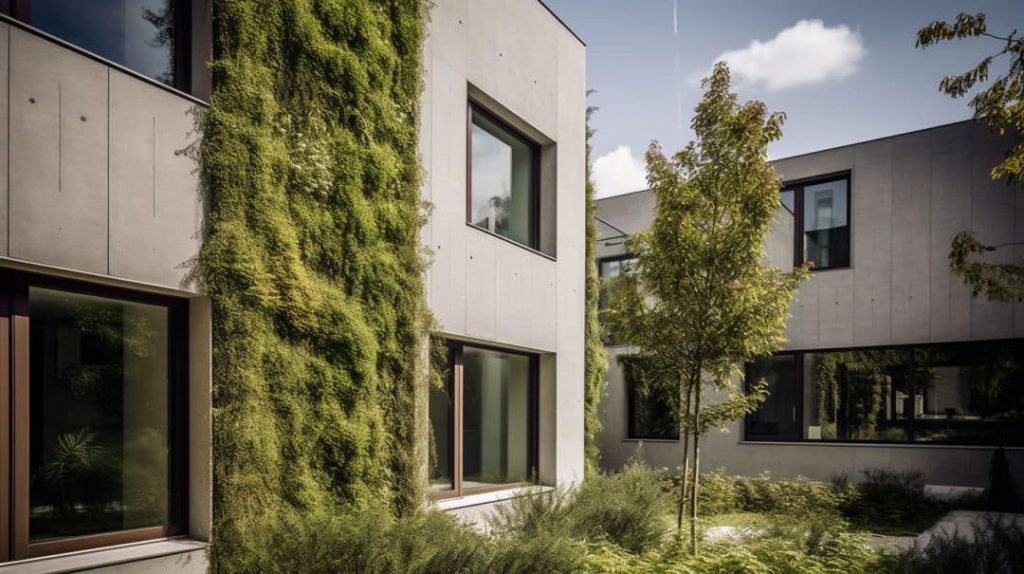
- Use: Absorb ambient humidity when air is dry and release moisture when air becomes humid.
- How it works: Hydroceramic is a porous ceramic that binds water vapor in its pores. The material “exhales” humidity when the environment gets too dry.
- Benefit: Automatically maintain comfortable humidity levels and reduce indoor condensation risks.
Self-Healing Concrete (Bio Concrete)

- Use: Autonomously heal cracks and fractures to maintain weatherproofing, insulation, and structural integrity.
- How it works: Microorganisms and nutrients within the concrete are activated by moisture when cracks form. The healing compounds fill and seal the fractures.
- Benefit: Extend EIFS service life by preventing deterioration from water and freeze/thaw damage. Reduce repairs.
Light Emitting Cement

- Use: Illuminate the facade or interior spaces with customizable lighting effects.
- How it works: Photoluminescent nanoparticles are embedded to absorb and re-emit light. The cement glows via phosphorescence.
- Benefit: Create unique design effects. Add lighting without wires. Enhance ambiance and wayfinding.
Carbon Fibre (Graphite fibre)
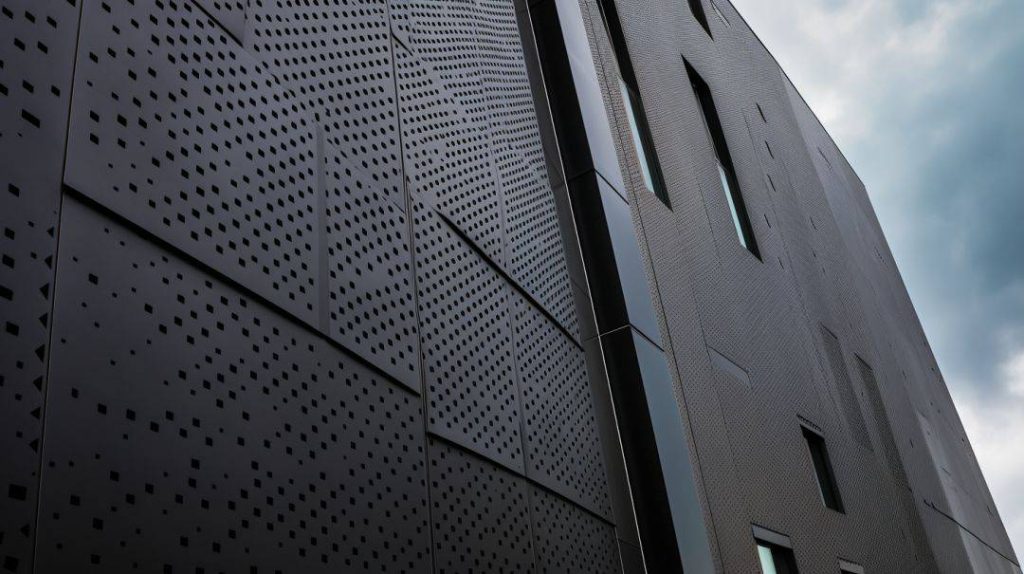
- Use: Reinforce EIFS base coats to improve impact resistance and tensile strength.
- How it works: Carbon fiber strands are very strong but lightweight. The graphite provides durability and structural reinforcement.
- Benefit: Strengthen EIFS while keeping them lightweight. Resist cracks from weathering, minor impacts and seismic activity.
Aerogel (Frozen Smoke)

- Use: Provide a super-insulating layer to boost thermal resistance dramatically and save energy.
- How it works: Aerogels are extremely porous materials derived from gels where the liquid is replaced with gas. This creates an exceptional insulator.
- Benefit: Significantly improve insulation value for EIFS walls, especially helpful for retrofits. Save on heating and cooling costs.
Hydromembrane

- Use: Maintain optimal moisture conditions within the EIFS wall to prevent condensation issues.
- How it works: Microporous membranes allow water vapor diffusion while remaining watertight under hydrostatic pressure. This waterproof breathable layer manages moisture.
- Benefit: Control the passage of moisture and humidity through the EIFS assembly to avoid condensation risks.
These cutting-edge materials illustrate the new capabilities and intelligence that can be embedded into EIFS. IoT integration will further unlock their potential.
Role of 3D Printing in Construction
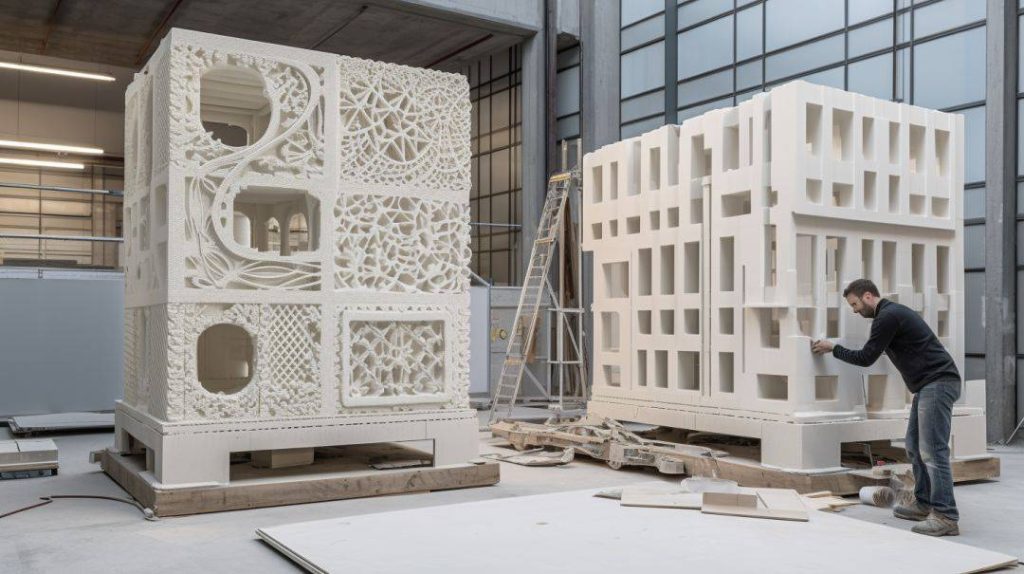
3D printing, also known as additive manufacturing, is starting to make inroads into construction processes. This shows promise for enabling customization, automation, and integration of smart materials into EIFS and other wall assemblies.
Benefits of 3D Printing for EIFS Construction Include:
- Customization – Unique and complex geometries, textures and patterns can be fabricated directly from digital models. This benefits design freedom.
- Efficiency – Less waste is produced compared to subtractive fabrication. Parts can be consolidated into optimized shapes.
- Flexibility – Wide range of materials like concrete, polymers, metals, and composites can be printed. Smart materials can be integrated.
- Automation – Labor intensity is reduced since 3D printers build structures semi-autonomously from digital files. Higher consistency.
- On-site production – Portable printers allow on-demand fabrication directly at the construction location. Reduces transport needs.
- Structural integration – Objects can be printed as complete assemblies rather than separate pieces to be joined. Results in stronger builds.
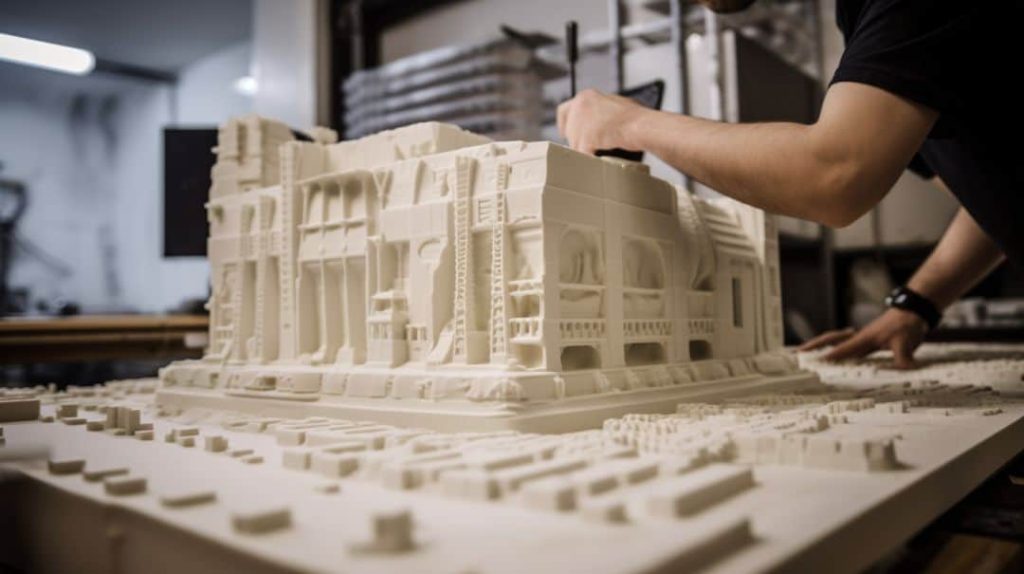
3D printing enables forms of construction that would be unrealistic with conventional techniques. EIFS components like insulation boards, flashing details, and molding accents can potentially be printed to order based on custom designs. Even whole wall sections eventually may be printed with smart materials included within their layered compositions.
Advancements in Smart Electrical Integration for EIFS
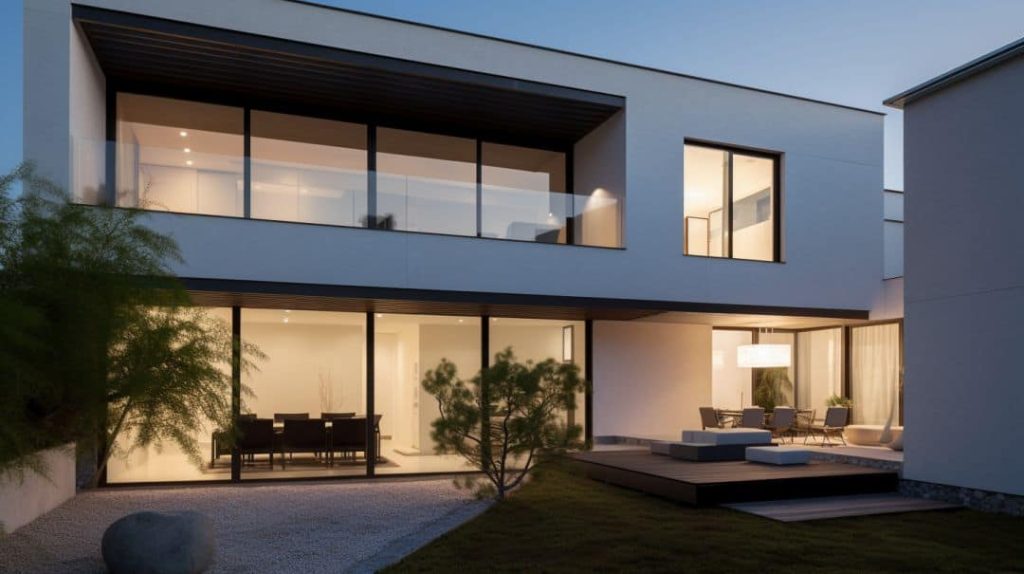
Integrating lighting, sensors, circuits, photovoltaics, and other interactive technologies into EIFS is also gaining traction. Known as functional electronics, the goal is to embed electrical capabilities directly into the building envelope.
Potential applications include:
- Heating elements – Carbon fiber or resistive wires provide de-icing, snow melting, or space heating.
- Lighting – LED nodes can provide illumination, signage, or displays integrated aesthetically.
- Sensors – Occupancy, temperature, and vibration sensors to enable automation, data collection and control responses.
- Photovoltaics – Solar cell laminates installed over EIFS convert sunlight to harvest renewable electricity.
- Digital displays – Low profile LED or OLED matrices display images, messages or videos programmable.
- Power transmission – Plastic substrates with printed silver nanowire circuits enable electricity transmission across surfaces.
Much of this technology can be made transparent or extremely thin. The functional electronics are mounted over existing EIFS, or integrated directly into the laminate build-up. Power and data connections are linked into the rest of the building systems.
The Future of EIFS and Smart Materials with IoT Integration
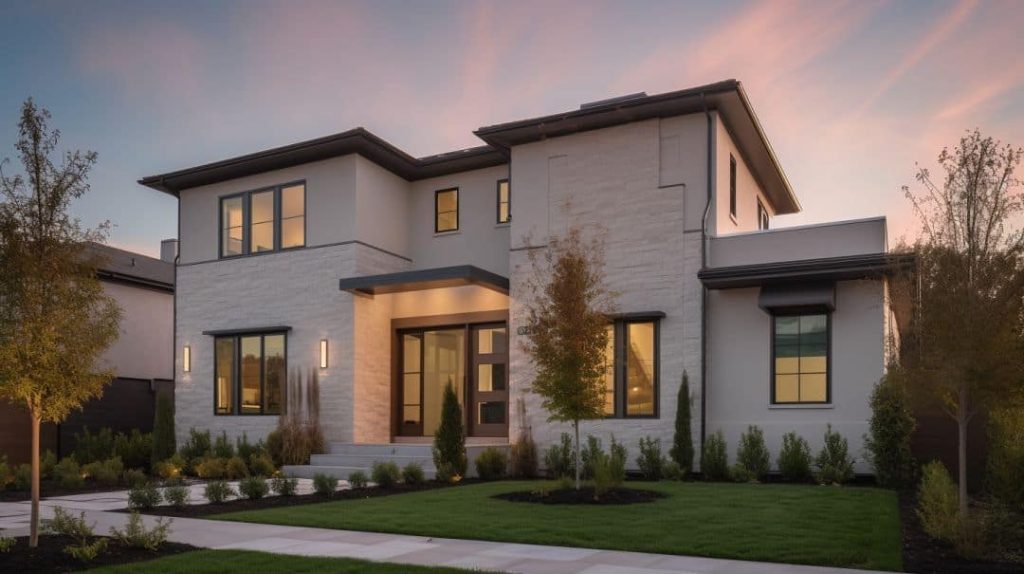
As smart materials and IoT integration advance, EIFS are poised to transform into multifunctional, highly intelligent skin systems for buildings. Here are some visions of the future potential:
- Energy efficiency – Smart EIFS with tunable insulation, solar harvesting, and nanotechnology could potentially generate more energy than the building consumes.
- Sustainability – Responsive facade materials will optimize daylighting, thermal comfort, humidity, and ventilation while avoiding unnecessary mechanical system usage.
- Weather adaptation – Buildings in storm-prone regions will dynamically adjust to seal openings, strengthen vulnerable areas, and direct impact forces to protect occupants and prevent damage.
- Aesthetic customization – Digital fabrication and smart materials will enable architectural creativity, personalization, and dynamic lighting capabilities that shift with seasons, events, or even occupants’ moods.
- Biometric security – Building entrances may open only in the presence of authorized individuals detected through heartbeat signature or other identifiers. Thermal scans could monitor for fevers or communicable diseases when entering public spaces.
- Seamless integration – Modern building construction tends toward greater specialization and division of trades. IoT-enabled smart EIFS will help bridge gaps between facade, HVAC, lighting, security, and interior finishing systems.
- Autonomous maintenance – Deep learning algorithms will optimize maintenance cycles. Some smart material EIFS may gain self-diagnostic and self-healing capabilities to prevent deterioration or mitigate damage when it occurs.
Continued innovation in smart materials, digital fabrication, and IoT-connected buildings will unlock EIFS possibilities we can scarcely envision today. It is an exciting frontier.
Conclusion: Building for a Smarter and Sustainable Future

The integration of smart materials and IoT-connected technologies represents the leading edge of EIFS capabilities. As urbanization accelerates globally, increasing demands are placed on the built environment. EIFS is poised to transform from humble beginnings as insulation panels into adaptive, multi-functional facades that actively foster efficiency, comfort, and design creativity.
With thoughtful implementation, the buildings of the future can incorporate EIFS that tune their performance dynamically based on environmental conditions and usage patterns. Materials science and digital networks will enable structures that are smarter, more sustainable, and designed for a human-centric experience.
At Indiana Wall Systems, we specialize in the installation and restoration of top-quality commercial and residential EIFS. Contact us at Phone: (765) 341-6020 or request a Free Estimate to find out more about our services and to discuss how advanced EIFS solutions can benefit your next project. The future of construction is bright. Let us help build it.
FAQs
What are some of the benefits of using smart materials in EIFS?
Smart materials like phase change materials and self-healing concrete can improve energy efficiency, moisture control, durability, and design flexibility in EIFS systems. They allow the facade to adapt and respond dynamically.
How does integrating IoT technologies help make EIFS “smarter”?
Adding sensors, connectivity, automation, and data analytics allows EIFS to actively monitor conditions and optimize performance factors like insulation, lighting, humidity, and integration with other building systems.
What role could 3D printing play in next-generation EIFS?
3D printing enables custom geometries, consolidation of components, automation, and integration of advanced and smart materials directly into EIFS fabrication. This supports design freedom, structural performance, and unique capabilities.
How can smart electrical integration extend the functionality of EIFS?
Embedding lighting, sensors, solar cells, displays, and circuits into EIFS supports features ranging from occupancy detection and dimmable lighting to weather resistance and renewable energy generation.
What are some future visions for how smart EIFS could transform buildings?
Future EIFS may dynamically optimize energy use, enhance biometric security, support autonomous maintenance through AI, and provide immersive customizable lighting designs among other advances. The possibilities are expansive.


